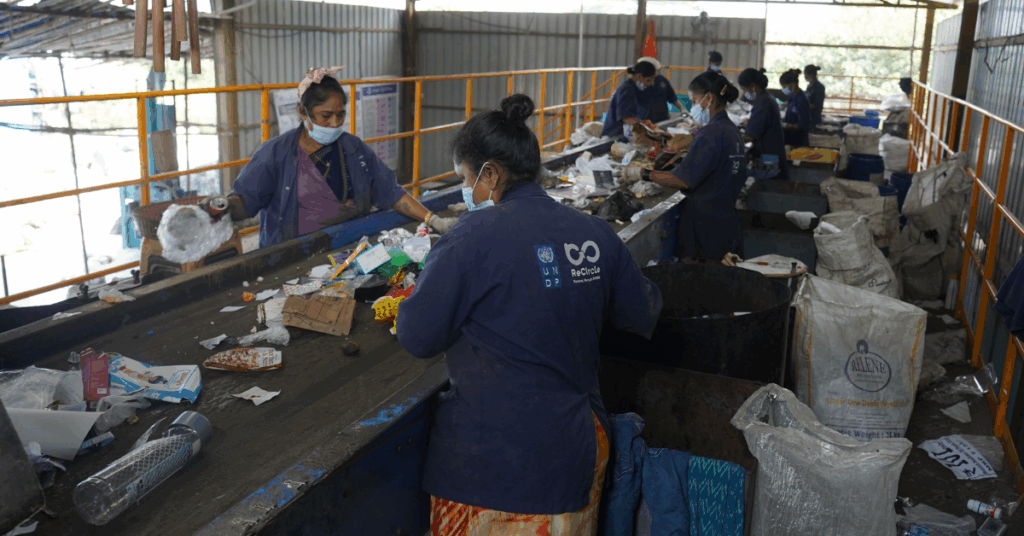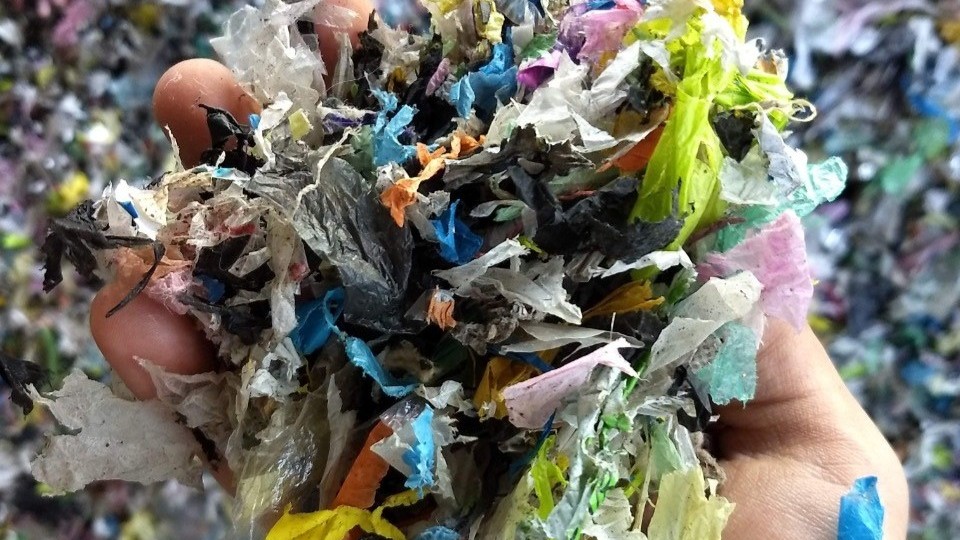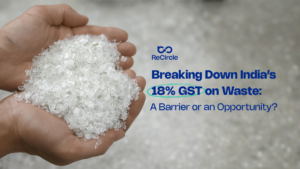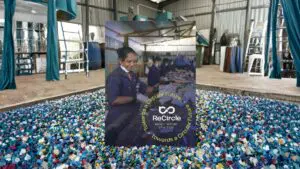If your business uses plastic, you have a responsibility.
From packaging to logistics, plastic is everywhere in how brands operate. Unfortunately, most of it is designed for single use and made from virgin plastic. That means every wrapper, bottle, or container adds to a growing global crisis.
Today, we produce over 400 million tons of plastic every year.
The result? Overflowing landfills, polluted oceans, microplastics in our food chain, and a growing demand from consumers for accountability.
But the real issue isn’t plastic itself. It’s how we use it and, more importantly, how we discard it.
As a brand, you have the power and responsibility to be part of the solution. But the solution needs to be practical, scalable, transparent, and built for long-term impact.
That’s where Plastic Neutrality comes in.
It allows your brand to take climate responsibility by balancing your plastic footprint—recovering and responsibly recycling as much plastic as you use.
So, how does it work? What impact does it create? How can you make it part of your sustainability strategy while gaining consumer trust along the way?
Let’s break it down.
What does going Plastic Neutral mean for your business?
Plastic neutrality is a commitment by businesses to take responsibility for the plastic they use. It doesn’t just mean reducing plastic consumption but also ensuring that the environmental impact of their plastic use is accounted for and addressed.
Through plastic neutrality, businesses voluntarily finance the recovery and responsible processing of low-value plastic (LVP) waste equivalent to what they generate. This is done via a system of plastic credits, which are used to fund the collection, segregation, and processing of low-value plastic (LVP) waste that might otherwise end up in landfills or the environment.
By financing plastic recovery, brands offset their plastic footprint and support infrastructure that diverts waste from our ecosystems and contributes to building a circular economy.
What are low-value plastics (LVP)?
Low-value plastics (LVP), often referred to as multi-layered plastics, are some of the most challenging materials to recover and recycle. These include packaging items like chip packets, chocolate wrappers, and other flexible plastic films.
They are typically made from a mix of plastic or combined with other materials like aluminium foil, and are contaminated with food residue.
This makes them difficult and expensive to clean, sort, and recycle through conventional systems. As a result, they’re frequently excluded from traditional recycling systems, which pollute landfills, waterways, and public spaces.
By targeting these low-value plastics (LVP) for recovery, plastic neutral programs address a critical gap in the waste value chain, ensuring that even the hardest-to-recycle materials are ethically and responsibly recovered and processed.
What Are Plastic Credits, and Why Do They Matter?
Plastic credits are a market-based mechanism that enables businesses to compensate for their plastic usage. For every kilogram of plastic a brand introduces into the supply chain, they finance the recovery and responsible recycling of an equivalent amount of low-value plastic from the environment.
How Are Plastic Credits Different from Carbon Credits?
While carbon credits focus on reducing greenhouse gas (GHG) emissions through projects like afforestation or renewable energy, plastic credits are specifically designed to address plastic pollution. They ensure plastic waste is collected, recycled/processed, and reintegrated back into the economy, thus reducing the need for virgin plastic.
Why Are Plastic Credits Important?
Plastic credits bridge the gap between sustainability and operational feasibility for businesses. They enable companies to take responsibility for their waste footprint while actively contributing to developing better waste recovery infrastructure. Additionally, they help address the challenge of non-recyclable plastics, ensuring they do not end up in landfills or oceans.
By supporting plastic credit programs, businesses foster a more resilient waste management ecosystem, empower waste pickers with financial incentives, and create a transparent, traceable impact within the circular economy.
Who Should Consider Going Plastic Neutral?
While Extended Producer Responsibility (EPR) regulations primarily apply to large corporations, Plastic Neutrality is an approach that any business committed to sustainability can adopt.
Industries That Can Benefit from Plastic Neutrality:
D2C and E-commerce Brands – Startups and emerging brands looking to integrate sustainability into their core operations and brand identity.
Luxury, Beauty, and Personal Care Brands – Companies reliant on plastic packaging that want to align with conscious consumers.
Consumer Goods & Packaging Companies – Businesses aiming to meet environmental, social, and governance (ESG) goals while maintaining operational efficiency.
Corporate Sustainability Leaders – Organisations seeking to enhance their sustainability credentials beyond regulatory compliance.
No matter the industry, businesses that embrace Plastic Neutrality take a proactive stance on environmental responsibility, positioning themselves as leaders in sustainable innovation.
Why Should Businesses Go Plastic Neutral
Sustainable Practices Define Market Leaders
Today, the brands shaping industries are the ones reshaping their values. Market leaders are no longer defined by profit margins or product innovation, but by the integrity of their practices. Integrating sustainability into business strategy isn’t just a responsible choice; it’s a competitive advantage. The businesses that commit to measurable, transparent climate action and plastic neutrality are setting the industry standards.
Direct Environmental Impact
Plastic neutrality is not just about compliance; it is about making a measurable difference. By ensuring that plastic waste is recovered and processed responsibly, brands actively contribute to reducing pollution, preventing plastic from entering ecosystems, and supporting circularity in waste management.
Consumer Trust & Competitive Advantage
Today’s consumers are paying attention. From what goes into their shopping carts to where it ends up—they’re asking questions, reading labels, and holding brands accountable. In fact, 73% of consumers would choose a brand with more sustainable packaging. Taking tangible action on plastic waste and adapting plastic neutrality helps businesses build credibility, differentiate themselves, and enhance long-term brand equity.
Investor & Regulatory Preparedness
With stricter environmental regulations on the horizon, early adopters of plastic neutrality will be ahead of compliance requirements. Investors increasingly prioritize ESG initiatives, and businesses that demonstrate sustainability leadership strengthen their appeal to environmentally conscious investors and stakeholders.
How to Become a Plastic-Neutral Brand?
Plastic neutrality is a structured, transparent process that requires businesses to actively participate in waste recovery initiatives.
Step 1: Assess Your Plastic Footprint
The journey to plastic neutrality begins with a comprehensive assessment of plastic usage across all stages of the supply chain. Conducting a detailed plastic audit allows businesses to identify high-impact areas and develop strategies to offset their footprint.
Step 2: Offset Through Plastic Credits
Once a company quantifies its plastic impact, it can invest in plastic credits. These credits support the collection, recycling, and responsible processing of plastic waste, ensuring that for every unit of plastic introduced, an equivalent amount is recovered.
Step 3: Fund Waste Recovery & Recycling Projects
Beyond offsetting plastic waste, businesses should invest in strengthening the waste management ecosystem. Partnering with organizations that recover hard-to-recycle plastics ensures that the materials do not end up in landfills, contributing to long-term sustainability.
Step 4: Certification & Transparency
Consumers demand transparency in sustainability initiatives. By obtaining Plastic Neutral Certification and publishing impact reports, brands can build trust and credibility, ensuring their sustainability commitments are measurable and verifiable.
Addressing the Challenges & Misconceptions of Plastic Neutrality
Is Plastic Neutrality Just Greenwashing?
When implemented responsibly, Plastic Neutrality is not a marketing gimmick but a legitimate sustainability strategy. Businesses that use it as a bridge to transition towards sustainable packaging, waste reduction, and circularity make a genuine impact.
Are All Plastic Credits Reliable?
Not all plastic credits are created equal. Businesses must choose verified programs that adhere to global standards, ensuring traceability and measurable impact. Selecting reputable partners and prioritizing transparency safeguards against ineffective credit programs.
Is Buying Credits Enough?
Plastic neutrality should not replace efforts to reduce plastic consumption. Brands that integrate reduction strategies alongside offsetting initiatives make the most meaningful contributions to sustainability.

How ReCircle is Pioneering Plastic Neutrality
At ReCircle, we go beyond sustainability promises by ensuring that every investment in plastic neutrality leads to verified waste recovery, environmental action, and fair wages for waste workers.
A Framework for Real Impact
ReCircle’s Certified Plastic Credit Framework ensures that every credit funds waste recovery that wouldn’t have happened otherwise. By prioritizing low-value plastics often ignored by traditional systems, we help brands make a real difference—keeping plastic out of landfills and oceans.
Technology-Driven Transparency
Our proprietary tech platform ClimaOne offers real-time insights, allowing brands to track recovered plastic, access verified impact reports, and ensure supply chain accountability. With full visibility, businesses can confidently demonstrate their sustainability efforts.
Customized Plastic Neutrality Solutions
Every brand’s plastic footprint is unique, and so is our approach. From footprint assessments to tailored offset strategies, we provide end-to-end solutions that help businesses reduce plastic dependency and integrate sustainability into core operations.
We empower brands to not just offset their plastic footprint but also build a more impact-driven, holistic and ethical resource recovery ecosystem.
Take the first step!
If your business still relies on plastic, you have a choice to make.
Every product shipped, every item packed—adds to a system that’s already stretched thin. But your brand has the opportunity to lead the shift from unchecked disposal to responsible recovery.
Plastic neutrality offers you a real chance to do that. To stop leaving behind a trail of waste—and start leaving behind a legacy of action.
Your customers are watching. Let’s make sure they remember your brand for the right reasons.
Reach out to us and to reimagine what responsibility looks like.




